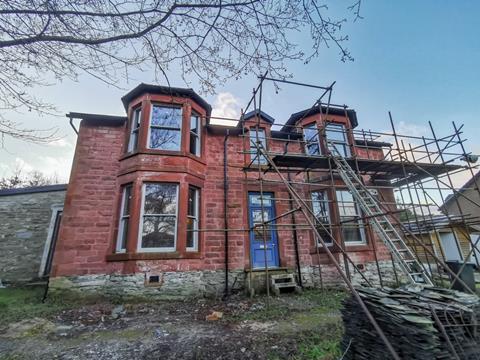The partnership is part of the Scottish government’s commitment to bringing empty homes back into use as affordable housing
An empty homes partnership between the Scottish government and Shelter Scotland has brought a record number of unoccupied homes back into use as affordable housing this year.

According to the partnership’s latest impact report published today, the total number of homes brought back into use in 2023/24 was 1,875, the highest annual figure to date.
Since the Scottish Empty Homes Partnership (SEHP) was formed in 2010, it has brought 10,889 homes back into use.
The report states that “to put the achievements into context, it took the first three years of the partnership to bring 100 homes back into use.
“It took almost another three years for this to increase to one thousand additional homes brought back through the intervention of empty homes officers.”
According to the report, 18 of Scotland’s 32 councils now have an empty homes buyback or acquisition programme, and 11 local authorities are developing strategic empty homes strategies or frameworks.
>> See also: Springfield and Barratt agree deal to build 3,000-home village in Scotland
>> See also: Proposed rent controls in Scotland could discourage investment in housing supply, CIH warns
The SEHP is funded by the Scottish government and hosted by Shelter Scotland. Ensuring empty homes are maintained, improved and put to the best use is part of the government’s Housing to 2040 strategy.
The government has invested over £3.7m in the Scottish Empty Homes Partnership, including funding to embed dedicated empty homes officers within councils.
The report notes that “bringing these homes back into productive use can be a quick and cost-effective way of increasing housing supply and can play an important role in helping to address Scotland’s housing emergency.”
The SEHP added that it wants “every local authority to see empty homes work as a key part of housing strategy, not a standalone optional activity.”
Figures published by the Scottish government in December 2023 showed that there were 46,217 empty homes in Scotland.
Of these, 17,937 had been empty for less than a year, while 28,280 had been empty for 12 months or more.
In the last 13 months, ten local authorities have declared a housing emergency. These include: Angus, Argyll and Bute, Dumfries and Galloway, Edinburgh, Glasgow, Fife, Scottish Borders, South Lanarkshire, West Dunbartonshire and West Lothian.
In May this year, the Scottish government declared a national housing emergency.
Housing minister, Paul McLennan, said: “Bringing empty homes back into use is one of the most cost-effective ways of increasing housing stock and I want to see every local authority working with the Partnership. I want to make clear that councils can also utilise the ring-fenced revenue they derive from council tax on second and empty homes to fund these essential empty homes services.”
Tahmina Nizam, national manager for the Scottish Empty Homes Partnership said: “The impact of the Scottish Empty Homes Partnership and empty homes officers across the country was recognised in the independent audit of empty homes work published by the Scottish Government last year. It is demonstrated again by the figures in the report we have published today.
“With more local authorities declaring housing emergencies over the past few months and the Scottish Government itself declaring a housing emergency in May, we know that bringing empty homes back into use will play a crucial part in meeting housing demand locally and nationally. The best way for local authorities to ensure we make full use of empty homes would be to expand their empty homes services and increase the resources they allocate to empty homes work as a whole.”











No comments yet